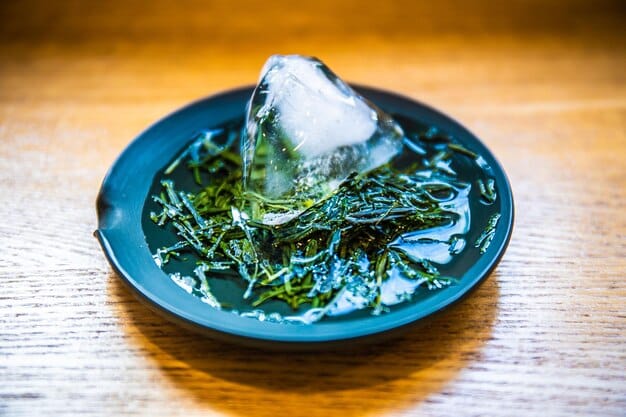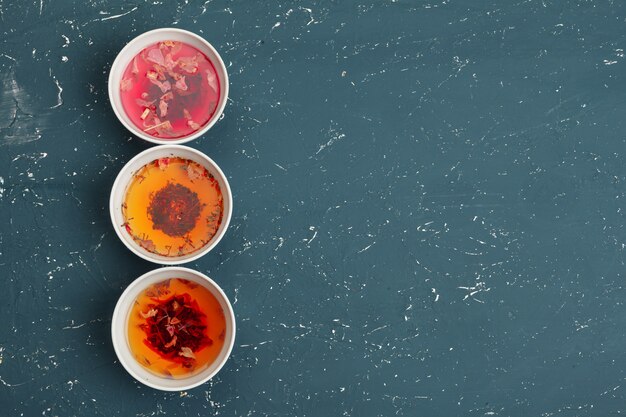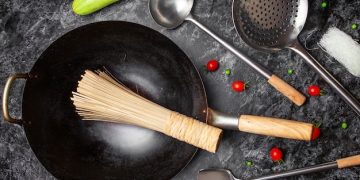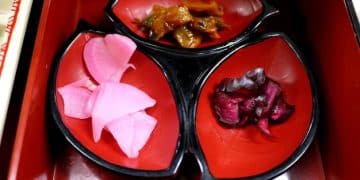Dashi Demystified: The Perfect Japanese Soup Stock Recipe
Dashi is the flavorful foundation of Japanese cuisine, a clear broth made from kombu (dried kelp) and katsuobushi (dried bonito flakes), offering a savory and umami-rich base for countless dishes.
Unlock the secrets of authentic Japanese cooking by learning how to make Dashi Demystified: How to Make the Perfect Japanese Soup Stock from Scratch. This simple yet profound broth is the heart of countless dishes, and mastering it will elevate your culinary skills.
What is Dashi? Understanding the Essence of Japanese Cuisine
Dashi is more than just soup stock; it’s the building block of Japanese flavor. It’s a clear, savory broth that forms the base for miso soup, noodle dishes, simmered dishes (nimono), and many other culinary creations. The key to dashi lies in its umami, the fifth taste, which provides a deeply satisfying and complex flavor profile.
Understanding dashi is understanding Japanese cuisine itself. Its subtle yet profound flavor enhances the natural ingredients in a dish, creating a harmonious and balanced taste experience. But, how can one truly demystify this essential ingredient?
The Key Ingredients of Dashi
Traditionally, dashi relies on two main ingredients: kombu and katsuobushi. Each contributes unique elements to the overall flavor profile.
- Kombu (Dried Kelp): Provides glutamates, which contribute to the umami taste. Select kombu that is thick, clean, and free from excessive white powder, as this indicates quality.
- Katsuobushi (Dried Bonito Flakes): Adds inosinates, another umami component, and a smoky aroma. Look for flakes that are light pink and deliver a rich, savory fragrance.
- Other Variations: Dashi can also be made with shiitake mushrooms (dried) or small dried sardines (niboshi), offering vegetarian and alternative flavor options.
These ingredients work synergistically to create a broth that is both simple and deeply flavorful. The combination of glutamates and inosinates intensifies the umami sensation, making dashi an indispensable ingredient in Japanese cooking.
In summary, dashi is fundamental to Japanese cuisine due to its simple yet complex flavor, derived primarily from kombu and katsuobushi. Its umami-rich profile enhances many dishes, showcasing the essence of Japanese culinary artistry.
The Basic Kombu Dashi Recipe: A Vegetarian Delight
Kombu dashi is a vegetarian version of the classic Japanese stock, relying solely on dried kelp. It’s light, clear, and full of umami, making it perfect for delicate dishes where you want the other ingredients to shine.
This type of dashi is not only simpler to make but also a versatile base for soups, sauces, and simmered dishes. Let’s explore the easy steps for crafting kombu dashi from scratch.
Ingredients for Kombu Dashi
For a basic kombu dashi, you’ll need just two ingredients:
- Kombu: About 4-5 inches of dried kombu kelp. Wipe it clean with a damp cloth to remove any surface impurities, but avoid washing away the white powder (mannitol), which is a source of umami.
- Water: 4 cups of cold, filtered water.
Step-by-Step Instructions
Creating kombu dashi involves a gentle extraction process:
- Soak: Place the kombu in the water and let it soak for at least 30 minutes, or up to several hours, to allow the flavors to infuse gently.
- Simmer: Place the pot over low heat and slowly bring the water to just below a simmer. Remove the kombu just before the water boils to prevent it from becoming bitter.
- Strain: Strain the liquid through a fine-mesh sieve. Now, you have a light and flavorful kombu dashi.
Kombu dashi offers a subtle, clean flavor profile, ideal for vegetarian dishes or as a base when you want to highlight the other ingredients in your recipe.
In essence, making kombu dashi is a straightforward process: soak kombu in water, gently simmer, and then strain. This yields a vegetarian-friendly stock that elevates the umami in any dish.

Awase Dashi: The Classic Combination of Kombu and Katsuobushi
Awase dashi, combining both kombu and katsuobushi, is considered the most versatile and widely used dashi in Japanese cuisine. The blend of these two ingredients creates a complex umami flavor that enriches diverse dishes.
This dashi is perfect as a foundation for miso soup, noodle broths, and numerous simmered dishes. Let’s delve into how to make awase dashi for an authentic Japanese experience.
The Right Proportions
Achieving the perfect balance in awase dashi requires precise ingredient ratios:
- Water: 4 cups of water form the base.
- Kombu: Use a 4-inch piece. Soak it in water before heating.
- Katsuobushi: Add 1 to 1.5 cups of katsuobushi after simmering the kombu.
Brewing the Perfect Awase Dashi
Follow these steps for a well-balanced awase dashi:
- Kombu Soak and Simmer: Soak kombu in water for at least 30 minutes, then gently heat until right before boiling. Remove the kombu.
- Add Katsuobushi: Add katsuobushi to the simmering water and turn off the heat. Let it steep for 1 to 2 minutes.
- Strain: Strain the broth through a fine-mesh sieve lined with cheesecloth. Do not squeeze the katsuobushi, as this can make the dashi bitter.
With awase dashi, the combination of kombu and katsuobushi creates a depth of flavor that elevates traditional Japanese dishes. This stock is a testament to the art of combining simple ingredients to achieve culinary excellence.
Overall, awase dashi’s blend of kombu and katsuobushi results in a complex umami profile, making it a go-to base for various Japanese dishes. The careful brewing process unlocks a depth of flavor unmatched by single-ingredient dashi.
Exploring Variations: Shiitake and Irko (Niboshi) Dashi
While kombu and awase dashi are foundational, exploring other variations can expand your culinary horizons. Shiitake dashi, made from dried shiitake mushrooms, offers a robust, earthy flavor, while irko (niboshi) dashi, derived from dried sardines, provides a bolder, fishier profile.
When aiming for specific flavor profiles, shiitake and irko dashi serve as unique alternatives. Understanding their preparation and distinctions is crucial.
Shiitake Dashi: Earthy and Rich
For shiitake dashi, use about 4-5 dried shiitake mushrooms per 4 cups of water. Soak the mushrooms for several hours, or overnight, to fully extract their flavor. Remove the stems before simmering to avoid bitterness. The resulting broth is rich, earthy, and vegetarian-friendly.
Irko (Niboshi) Dashi: Robust and Fishy
Irko dashi requires around 1/2 cup of dried sardines (niboshi) for 4 cups of water. Remove the heads and innards to prevent a bitter taste. Simmer the niboshi for about 10-15 minutes, then strain. This dashi has a strong, fishy flavor, often used in heartier dishes.
- Shiitake Preparation: Soak dried shiitake mushrooms for optimal flavor extraction.
- Niboshi Preparation: Remove heads and innards from dried sardines to prevent bitterness.
- Flavor Profiles: Shiitake dashi offers earthy notes, while niboshi dashi is robustly fishy.
Experimenting with shiitake and irko dashi broadens the scope of Japanese cooking. The unique flavors they bring open the door to distinct culinary experiences.
In conclusion, by understanding the nuances of shiitake and irko dashi, you can tailor the flavor profiles of your dishes, offering a wide array of culinary possibilities beyond the traditional kombu and awase dashi.

Tips for Enhancing Your Dashi
Crafting exceptional dashi involves more than just following a recipe; it requires attention to detail and a few insider tips. Optimizing the flavor and clarity of your dashi can significantly elevate your cooking.
Enhancing dashi involves focusing on ingredient quality, proper techniques, and mindful adjustments. Let’s explore these enhancements.
Choosing Quality Ingredients
The quality of kombu and katsuobushi directly impacts the dashi’s flavor:
- Kombu Selection: Opt for thick, wide kombu with minimal surface impurities. Avoid overly brittle pieces.
- Katsuobushi Selection: Choose flakes that are light pink with a rich, smoky aroma. Fresh flakes offer a more vibrant flavor.
Mastering the Simmering Process
Proper simmering is crucial for flavor extraction without causing bitterness:
- Low Heat: Maintain a gentle simmer, just below boiling.
- Timely Removal: Remove kombu just before boiling and katsuobushi after steeping for 1-2 minutes.
Enhancing dashi also involves techniques like refining the simmering process and ensuring the correct ratios. These improvements lead to a richer, clearer, and more flavorful dashi.
In summary, enhancing dashi boils down to selecting high-quality ingredients and refining the simmering process. These efforts optimize flavor and clarity, leading to an exceptional dashi that elevates your Japanese cooking.
Using Dashi in Recipes: Miso Soup and Beyond
Once you’ve mastered making dashi, the possibilities are endless. This foundational broth can enhance an array of Japanese dishes, adding depth and umami. Two popular applications are miso soup and various simmered dishes.
Dashi is versatile enough to boost anything from broths to sauces. Let’s explore its culinary applications.
Miso Soup: A Classic Application
Miso soup is a staple in Japanese cuisine and prominently features dashi. Here’s how to incorporate dashi in your miso soup:
- Base Broth: Use awase dashi as the base. Its complex flavor pairs well with miso paste.
- Miso Integration: Dissolve miso paste in a small amount of dashi before adding it to the pot. Avoid boiling the miso to retain its flavor.
- Ingredient Additions: Add tofu, seaweed, and green onions for a complete soup.
Simmered Dishes: Enhancing Flavors
Dashi adds richness to simmered dishes (nimono). Use it as a braising liquid for vegetables, meats, or tofu. The umami in dashi infuses these ingredients, creating a savory, comforting meal.
- Nimono Techniques: Braise ingredients in dashi for enhanced flavor absorption.
- Flavor Balance: Adjust seasoning for a balanced, harmonious taste.
Using dashi in recipes like miso soup and simmered dishes showcases its versatility. This foundational broth elevates dishes with umami and depth.
In short, whether in miso soup or simmered dishes, dashi’s subtle yet complex flavor profile enhances various Japanese cuisines. Its versatile nature allows culinary experimentation and taste refinement.
| Key Point | Brief Description |
|---|---|
| 🌱 Kombu Dashi | Vegetarian stock using kombu, soaked and simmered for umami. |
| 🐟 Awase Dashi | Classic combo of kombu and katsuobushi, rich in umami. |
| 🍄 Shiitake Dashi | Earthy broth from dried shiitake mushrooms, perfect for vegans. |
| 🐟 Irko Dashi | Strong, fishy flavor from dried sardines, for heartier dishes. |
Frequently Asked Questions
▼
Yes, dashi powder is a convenient alternative. However, homemade dashi provides a fresher and more nuanced flavor. Use dashi powder when time is short, but aim for homemade when possible.
▼
Dashi can be stored in the refrigerator for up to 3 days. Ensure it is in an airtight container to maintain its freshness and prevent it from absorbing other flavors.
▼
Yes, freezing dashi is an excellent way to preserve it. Store it in ice cube trays or freezer-safe containers. Frozen dashi can last for up to a month without significant loss of flavor.
▼
Use a fine-mesh sieve lined with cheesecloth for the best results. This method ensures that even the smallest particles are removed, resulting in a clear and smooth broth.
▼
No, do not wipe off the white powder on kombu. This powder, called mannitol, is a source of umami flavor. Simply wipe off any visible dirt or impurities, leaving the mannitol intact.
Conclusion
Mastering Dashi Demystified: How to Make the Perfect Japanese Soup Stock from Scratch unlocks a world of authentic flavors, providing a foundation for countless dishes from miso soup to simmered delicacies. Understanding the nuances of each dashi variation—kombu, awase, shiitake, and irko—enables you to tailor your culinary creations, bringing the essence of Japanese cuisine to your table.





